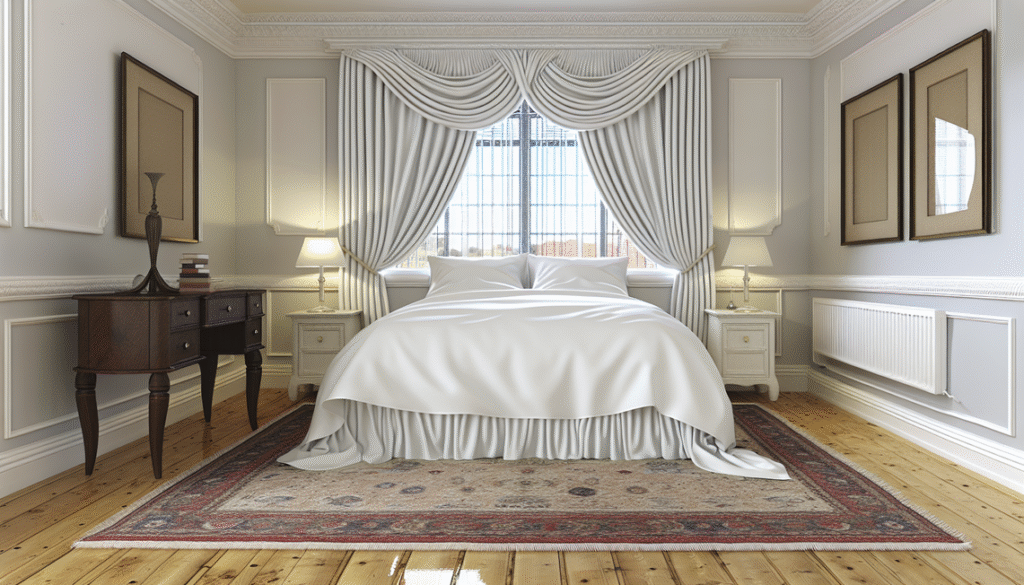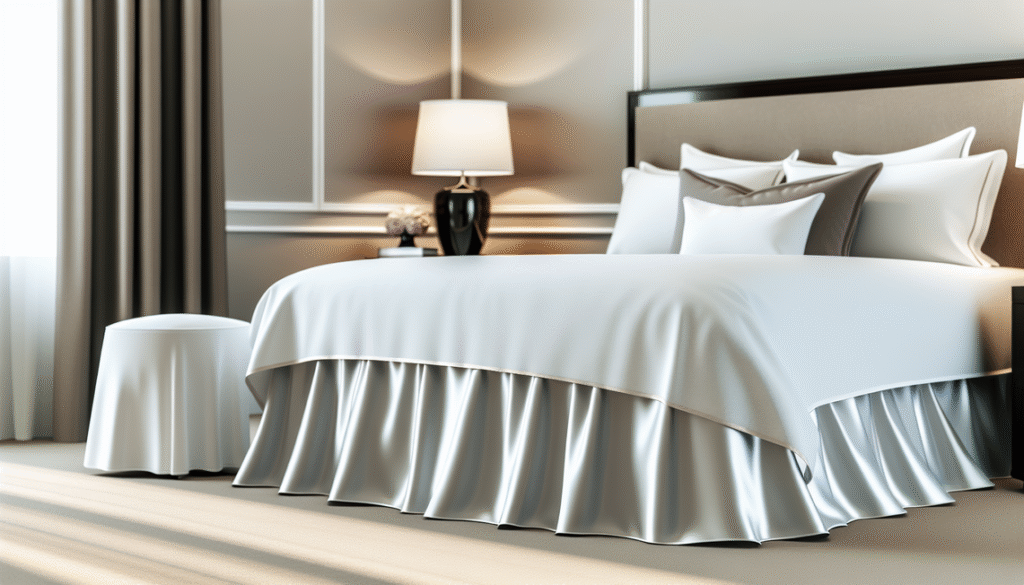There’s nothing quite as irritating as waking up to find your fitted sheet has slipped off the corners of your mattress, leaving you tangled and frustrated. This common household annoyance is particularly prevalent with luxury and deep mattresses, which are increasingly popular in UK homes. But what causes this frequent slippage, and more importantly, what can you do to stop it? This comprehensive guide explores the root causes of slipping fitted sheets and provides seven expert-backed solutions to ensure your bedding stays perfectly in place, night after night.
Understanding Why Fitted Sheets Slip on Deep Mattresses
Fitted sheets frequently slip off deep mattresses due to a combination of factors: insufficient mattress depth, elastic wear, and fabric friction. Most traditional fitted sheets are designed for standard mattresses (10-12 inches / 25-30cm deep). However, many modern UK mattresses, especially luxury or deep models, often range from 14 to 18 inches (35-45cm). This depth mismatch means standard sheets lack the pocket depth to securely grip the mattress, causing them to slide off.
Moreover, the elastic in fitted sheets degrades over time. Studies indicate elastic can lose up to 40% of its strength after about 25 washes, significantly reducing its ability to hug the mattress. Lastly, smooth mattress surfaces like memory foam, combined with high-thread-count or silky sheet fabrics, minimize friction, promoting slippage throughout the night. Addressing these core factors is key to solving persistent sheet slippage.
Mastering Mattress Measurements: The Key to Perfect Fit
Accurate mattress measurement is crucial for preventing fitted sheets from slipping. Simply use a tape measure to determine the thickness from the mattress’s top to where it meets the bed base. Crucially, include any mattress toppers, mattress protectors, or deep pads, as these significantly add to the total depth.
UK mattress depth categories:
- Standard: 10-12 inches (25-30cm)
- Deep: 13-15 inches (33-38cm)
- Extra Deep/Luxury: 16+ inches (40cm+)
Once you know your precise depth, select fitted sheets specifically designed for that pocket depth or deeper. UK retailers increasingly offer “deep pocket” and “extra deep” fitted sheets. Choosing sheets with pockets 1-2 inches deeper than your mattress ensures ample fabric to tuck securely, preventing slippage. For instance, a 16-inch deep mattress requires sheets designed for 17-18 inch depths, not standard ones.
Strengthen Your Sheets’ Grip: Effective Elastic Reinforcement Techniques
Sheet elastic is vital but weakens over time. Reinforcing or replacing it can significantly improve grip:
Elastic Suspenders (Sheet Straps)
These adjustable straps clip diagonally from sheet corners, looping under the mattress to anchor sheets securely. Easily found in UK stores, they are highly recommended for deep mattresses.
Bed Sheet Grippers (Giant Rubber Bands)
Thick rubber bands encircle the entire mattress, tightly securing both fitted and flat sheets. Available online, they are effective for mattresses over 16 inches deep.
Renewing Elastic
For DIY enthusiasts, replacing worn elastic within fitted sheet casings is possible. Open seams, insert new quality elastic (1-2cm width), and stitch securely. Use elastane-rich elastic for best stretch and recovery.
Comparison of Sheet Grip Solutions
| Solution | Ease of Use | Effectiveness | Cost | Durability |
|---|---|---|---|---|
| Elastic Suspenders | Easy (clip-on) | High | Low-Moderate | Moderate |
| Bed Sheet Grippers | Moderate (lift mattress) | High | Low-Moderate | High |
| DIY Elastic Renewal | High (sewing skills) | High | Low | High |
These elastic reinforcements are crucial for preventing fitted sheet slippage, providing a stable foundation for a good night’s sleep.
Choosing the Right Fabric and Surface Solutions for Slip Prevention
Fabric choice significantly impacts how well sheets stay put:
Choose Natural, Textured Fabrics
Cotton or linen fitted sheets offer superior friction and grip on mattress surfaces compared to satin or silk. These natural fibres are less slippery, especially on smooth modern mattresses.
Use a Layered Approach
If you love silky sheets, use a cotton fitted sheet as a base layer. This anchors the bed by creating friction between the mattress and the cotton, with your preferred sheet layered on top.
Avoid Ultra-High Thread Counts
Luxurious ultra-high thread count cotton (above 800) or satin sheets are often too smooth and slippery. UK experts recommend moderate thread counts (200-400) for optimal grip and breathability.
Mattress Surface Add-Ons
Non-slip mattress pads (rubberized) and silicone grip dots placed between the fitted sheet and mattress add stability. UK brands like Silentnight offer effective rubber-backed pads. These choices create a friction-rich bedding system.
Proven Bed-Making Hacks: Military Fold, DIY Corner Locks, and More
Simple bed-making tricks can effectively anchor your fitted sheets:
Military Fold (Hospital Corners)
After securing your fitted sheet, tuck any excess flat sheet tightly under the mattress sides, then fold this tuck back over the mattress edge. This creates a physical barrier against sheet movement, known as hospital corners.
DIY Corner Locks
Temporarily pin fitted sheet corners to the mattress base using large safety pins through inner seams. Remember to remove pins before washing.
Tight Tucking Technique
Pull sheets snugly around mattress edges, avoiding loose fabric or wrinkles. A taut, smooth sheet is less likely to shift.
Secure with Mattress Clips
Spring-loaded clips, available from UK retailers, clamp sheets directly to the mattress base, providing extra holding power for deep beds.
These hacks offer quick, cost-effective fixes for slipping sheets.
Professional Advice for Long-Lasting Bedding Stability
UK bedding consultant Sarah Thompson offers these key points for enduring bedding stability:
- Measure Full Mattress Depth: Always include mattress toppers, protectors, or deep pads.
- Avoid Over-Tightening: Excessive pulling damages elastic; properly sized sheets fit snugly.
- Replace Elastic Periodically: Elastic degrades with washing; upgrade or replace every 2-3 years.
- Invest in Quality: Reputable UK brands offer reinforced stitching and quality elastic for deep mattresses.
- Rotate and Adjust Sheets: Distribute wear evenly to extend lifespan and maintain elasticity.
These professional tips ensure your bedding stays secure and comfortable for years.
Creating a Comprehensive Slip-Resistant Bedding System
The most sustainable solution for preventing fitted sheets from slipping involves combining multiple approaches. By integrating these expert-backed strategies, you can virtually eliminate the frustration of slipping sheets and ensure consistently comfortable sleep. Build your comprehensive system:
- Accurate Measurement: Know your precise mattress height (including toppers).
- Deep Pocket Sheets: Choose sheets with 1-2 inches more pocket depth than your mattress.
- Non-Slip Mattress Pads: Add friction points directly on the mattress.
- Natural Fibre Sheets: Opt for cotton or linen for optimal grip.
- Elastic Reinforcement: Use suspenders or grippers for extra hold.
- Bed-Making Techniques: Employ military fold and tight tucking.
- Regular Maintenance: Monitor and refresh elastic as needed.
This layered strategy helps UK households significantly reduce bedding-related sleep disruptions. For high-quality deep fitted sheets specifically designed for luxury UK mattresses, explore the excellent Extra Deep Fitted Sheet Bed Collection at RugStars.co.uk. Implement these solutions for uninterrupted sleep and a perfectly made bed every night.
Frequently Asked Questions (FAQs)
1. Why do fitted sheets commonly slip off deep mattresses?
Fitted sheets often slip off deep mattresses due to insufficient pocket depth for the mattress’s thickness (including toppers), weakened elastic over time, and reduced friction from smooth mattress surfaces or silky sheet fabrics.
2. What’s the most crucial step to ensure my fitted sheets stay on?
The most crucial step is accurately measuring your mattress’s total depth. Then, purchase fitted sheets with a pocket depth 1-2 inches greater than this measurement to ensure a secure, ample tuck.
3. Can I prevent my existing fitted sheets from slipping, or do I need new ones?
Yes, you can often prevent existing sheets from slipping using elastic sheet suspenders, bed sheet grippers, bed-making hacks (like the military fold), or non-slip mattress pads. If the elastic is severely worn, renewing it or buying new deep-pocket sheets would be the most effective.
4. What type of fabric is best for fitted sheets on deep mattresses to prevent slipping?
Natural, textured fabrics like cotton (e.g., percale) or linen are generally best as they offer more friction against the mattress. Avoid very high-thread-count or overly silky fabrics which tend to be more slippery.
5. How often should the elastic in fitted sheets be replaced or reinforced?
Elastic in fitted sheets degrades with use and washing (losing strength after ~25 washes). Professional advice suggests replacing or reinforcing it every 2-3 years, depending on frequency of use, to maintain optimal grip.



